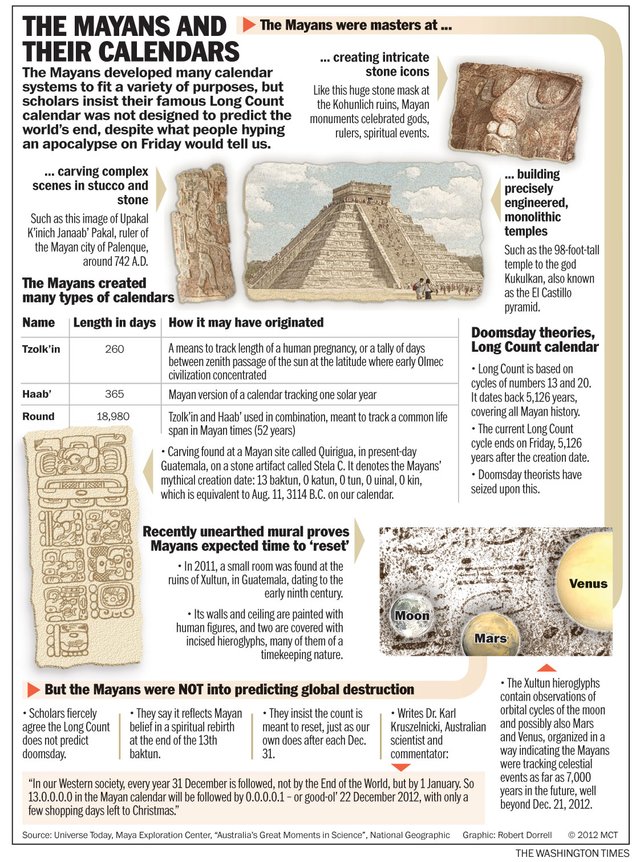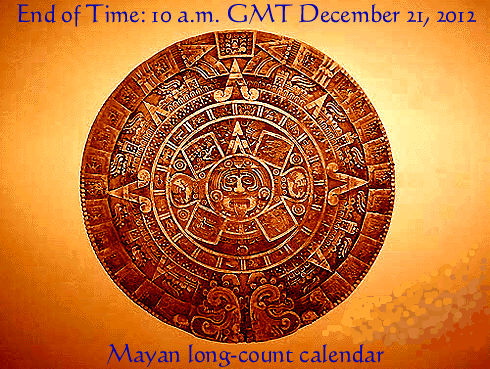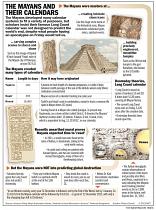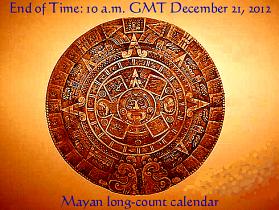End of the World fails to materialize despite predictions
Be warned -- the end of the world is coming, just not today. The much ballyhooed doomsday predictions touted by prognosticators of various stripes have failed to come to fruition. The world still exists.
Of course, this is not news to the Mayans. Countless self-described experts on Mayan culture have stated in recent years that the Mayans predicted the end of the world to occur today. None of them, however, thought it prudent to consult the actual Mayans, who still exist in rural Mexico. Mayan religious leaders and true scholars of Mayan culture have been saying for years that there is nothing in the Mayan culture or tradition that predicts that the world will end, today or any day.
“They never said it,” Walter R.T. Witschey told the Washington Times. Dr Witschey is a Maya researcher and professor of anthropology and science education at Longwood University in Farmville, Va. “Some of the Mesoamerican history and artifacts in that region talk about new worlds and new eras, but the people carving all these inscriptions really were not forecasting the end of the world at all. To the contrary, their calendar keeps right on rolling past this date.”
So why do we believe they said it? Most serious researchers of Mayan culture point the finger at Michael Coe. In 1966, Coe wrote a book about Mayan artifacts in which he stated that one particular incomplete inscription might point to a time of upheaval occurring around the end of the 13th Baktun of the Mayan long count calendar, which many scholars correlate to between December 21st and 25th of 2012. In his book, Coe used a word lifted from the New Testament, “Armageddon.”
Then, in the 1980’s, Terrence McKenna wrote about a theory he called “Timewave Zero.” According to McKenna, there was a mathematical correlation between the King Wen sequence of the I Ching, an ancient Chinese system of prognostication, and the Mayan Long Count Calendar. McKenna claimed that when he superimposed the King Wen sequence of the I Ching upon human history beginning with the birth of Christ, both the I Ching and the Mayan long count ended on the same day- December 21st, 2012. This meant, he reasoned, that both the ancient Mayans and the ancient Chinese predicted that the world would end on that day.
Terrence McKenna’s theories took hold in the early days of the Internet, and by the time of McKenna’s death of a brain tumor in April, 2000, the myth of the 2012 doomsday had gained widespread acceptance.
Other rumours of a world-ending event on this day had different sources. In 1995, a book was written by Nancy Lieder, founder of the website ZetaTalk. Lieder claimed to be in contact via a telepathic implant in her brain with extra-terrestrials from the Zeta Reticuli star system. She claims that she was chosen to warn mankind that there was a planet called Niburu that would sweep through the inner Solar System in May 2003, causing Earth to undergo a pole shift that would destroy most of humanity. When May 2003 came and went without the predicted cataclysm, Leider jumped on the building 2012 bandwagon and the date of Niburu’s passage was revised to December 21, 2012.
In response to numerous calls coming into it’s phone system about the various end-of-the-world scenarios, NASA released a video Tuesday debunking the notion of a Mayan doomsday. The video, which was postdated Dec. 22 and entitled “Why the World Didn’t End Yesterday,” notes that none of the thousands of Mayan ruins discovered and translated by archaeologists discuss the end of the world. The video also addressed rumors that the sun is threatening to envelop the globe (it isn’t); that asteroids or comets are on a collision course with Earth (they aren’t); and assures us that if Nibiru — or any other planet, for that matter — were about to slam into ours, it would be the brightest object in the sky and visible to the naked eye.
Comments
There are 0 comments on this post















